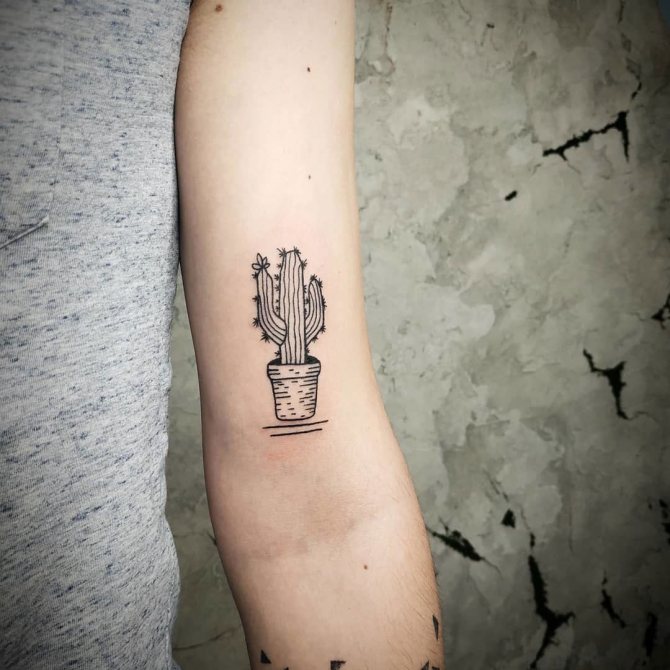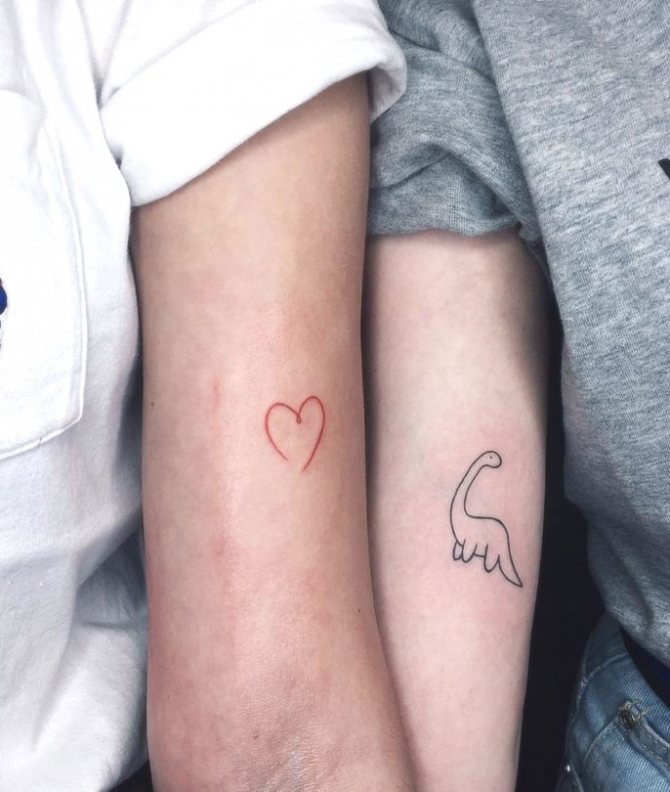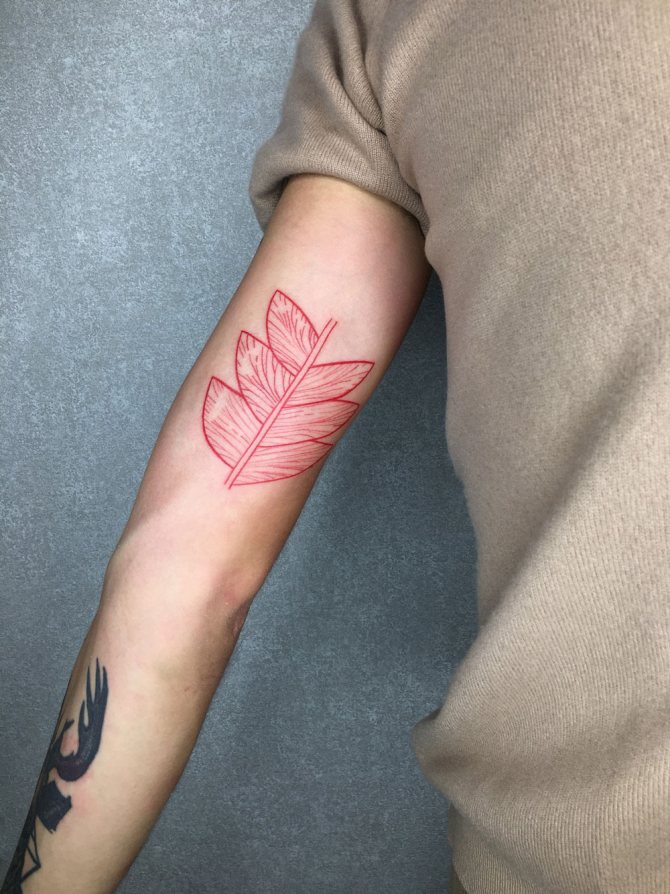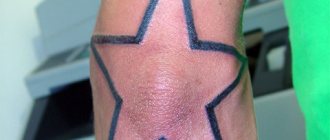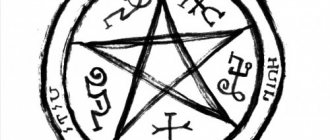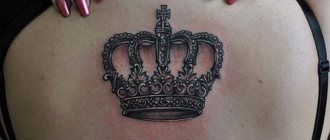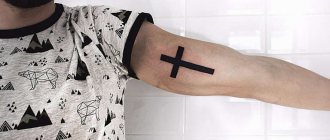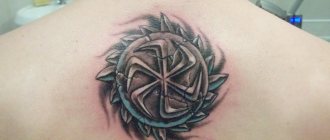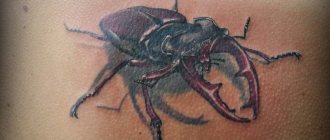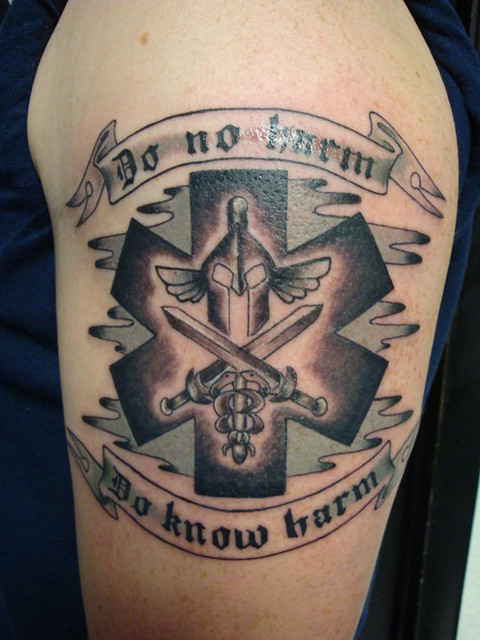
Tattoo on the shoulder "do no harm".
Medical tattoos refer to professional imagery. It is a cool blend of humor, aesthetics and deep symbolism. Antique and modern emblems of doctors are used for the tattoo. The purpose of the tattoo is to emphasize the status and attitude of the bearer's profession. For most wearers, it is a kind of discharge, reminding them of the positive side of the vocation.
Types of tattoos
Medical topics are associated with the study and treatment of diseases. But the concept itself includes many more designs and motifs. Medical tattoos are becoming more and more popular and in demand due to interesting combinations and unusual interpretations of symbols. Sketches can carry not only a general meaning, but also have a hidden meaning for the owner of the picture. It all depends on what additional elements will be used in the process of creating the tattoo.
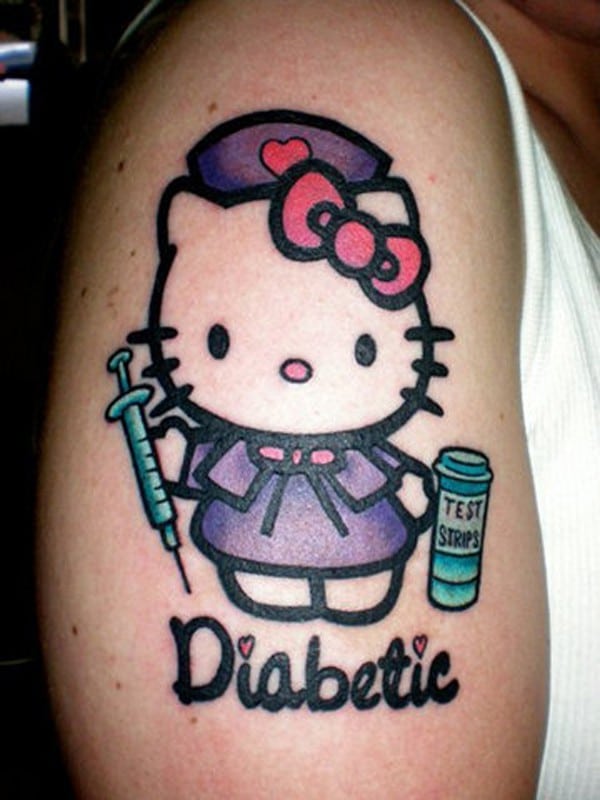

Medical tattoos can be divided into three large categories:
- Sketches that refer to a specific medical profession.
- Drawings and motifs that indicate a person has a chronic illness. Such medical tattoos are often done with only black pigment near the affected area.
- Tattoos whose main purpose is to hide scars after surgery. Sketches can be different in parameters and types of designs. Such medical tattoos are applied by women after a caesarean section.
Each variety has its own characteristics of application, symbolism and hidden meaning. That's why it's hard to make up your mind on your own. It is necessary to consult with specialists first.
Case example: Areola reconstruction
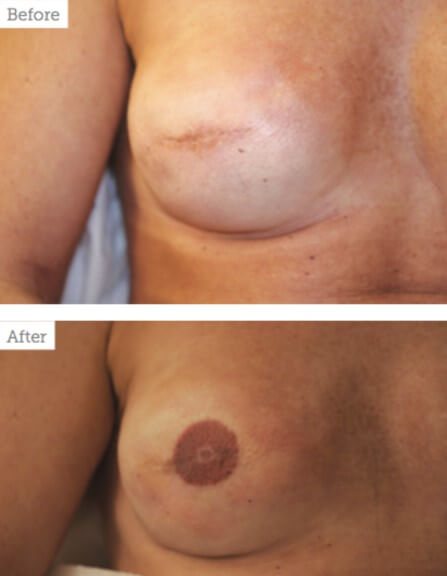

The patient underwent areola reconstruction above the mastectomy scar.
Using circular movements.The specialist was able to create a rippling effect, making the areola look textured and natural.
To create illusion of the nipple sticking out. a few lighter shades were used.
The specialist worked on each area with different needles to make the result look as close to natural as possible.
This type of procedure can take two sessions or more.
If scar tissue is denseWhen inserting the needle, care must be taken to Properly position the pigment In order to achieve the desired results.
The procedure usually takes about two hours.
There may be some soreness or swelling after the procedure.
Read the most interesting articles at Telegram!
Occupation and symbol
The images may include various inscriptions, symbols or elements of drawings. According to the medical tattoos of this plan, it is possible to determine what kind of profession the person is engaged in. Surgeons prefer the image of a scalpel or medical instruments that are used during the operation.
Often medical women choose a beautiful inscription in Latin or aphorisms about the profession. Sketches can combine different elements and symbolism. Nursing staff also have their own tattoos. These are bandages and syringes. However, tattoos depicting a syringe and/or needle have recently been done to themselves and drug addicts. Basically, the image is applied to the place where injections are made.
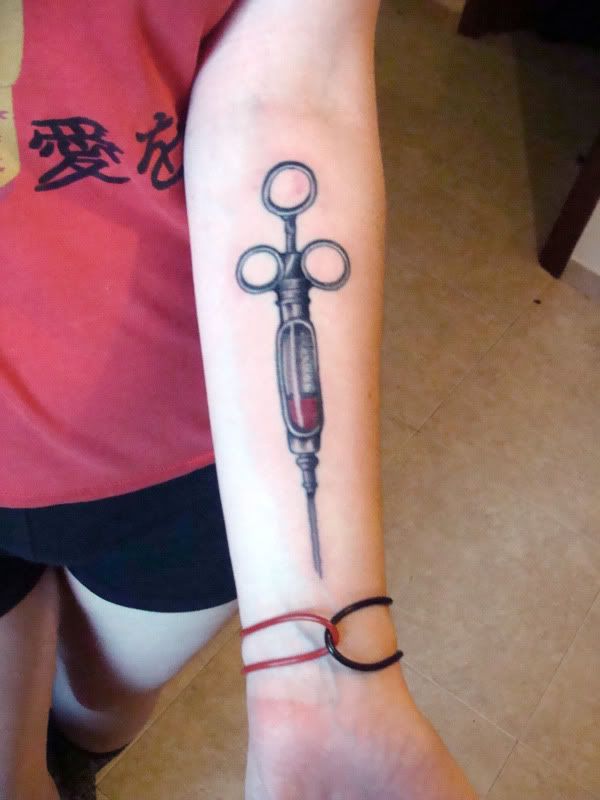

Often a sketch in the form of a red cross is used. This is a direct indication that a person belongs to the medical profession. Doctors consider it a type of tattoo, but in addition to this symbol, more inscriptions or additional signs are made.
A popular image is considered a medical snake wrapped around a bowl. It is a symbol of medicine and wisdom. Usually in this drawing additional elements are not used. In rare cases, you can meet such a tattoo with Latin inscriptions.
The tattoo "DO NOT REANIMATE": law, ethics and case studies
It's not uncommon to see stories on social media and non-core media about people drawing up a DNR in their lifetime. This is usually due to a chronic illness that brings suffering and a poor prognosis for recovery. A tattoo is not a bad way to notify medical personnel of any important points related to the wearer's health, just in case he or she is unconscious and no relatives are around. For some reason, "do not resuscitate" tattoos are especially attractive to journalists and SMM specialists, and if you write that doctors themselves apply them all the time, the news will go viral.
Notifications of publications on our site and other emergency medicine news - on Telegram channel "Ninth Call."
Does the "do not resuscitate" tattoo have any meaning in Russia? The rules for not resuscitating are defined by law:
Federal law "On the bases of health protection of citizens in the Russian Federation" from 21.11.2011 № 323-FZ
Article 66. Determination of the moment of a person's death and termination of resuscitation measures
7. Resuscitation measures are not carried out:
1) in the state of clinical death (the arrest of vital functions of the human body (circulation and respiration) of a potentially reversible nature against the background of the absence of signs of brain death) against the background of the progression of reliably established incurable diseases or incurable consequences of acute trauma incompatible with life;
2) in the presence of signs of the biological death of a person.
The same is stated in the Resolution of the Government of the Russian Federation of 20.09.2012 № 950 "On approval of the Rules for determination of the moment of human death, including criteria and procedure for determination of human death, the Rules for termination of resuscitation measures and the form of the protocol for determination of human death".
A tattoo does not allow us to RECOGNIZE incurable diseases or consequences of acute trauma, so it cannot serve as a guide for medical care.
We remember that "a necessary prerequisite for medical intervention is the informed voluntary consent of a citizen or his legal representative for medical intervention..." (Article 20, Paragraph 1 of the same law. (Article 20, Paragraph 1 of the same law). At the same time, ibid,
9. Medical intervention without the consent of a citizen, one of the parents or another legal representative is allowed: 1) if medical intervention is necessary for urgent indications to eliminate a threat to a person's life and if his condition does not allow him to express his will...
In the countries that have won the patient-centered approach, the tattoo "Do Not Resuscitate", or "DNR" for short. "DNR", initiates certain actions by doctors, which can be learned from two interesting clinical cases.
Clinical Case #1.
We present a case of care for a man whose fear of the severity of his prognosis for life led him to get a "Do Not Resuscitate" tattoo on his chest [1]. Paramedics brought an unconscious 70-year-old man with chronic obstructive pulmonary disease, diabetes mellitus, and atrial fibrillation to the emergency department, where he was found to have elevated blood alcohol levels. In the ICU a few hours later, hypotension and metabolic acidosis with a high anion difference, pH 6.81 were detected. He had a tattoo on the anterior surface of his chest that read "Do Not Resuscitate" and was accompanied by his supposed signature (see Figure 1). Because the patient was admitted without documentation or relatives, the social work department was engaged to assist in locating his family members. All efforts to address the reversible causes of repressed consciousness did not result in a restoration of mental status sufficient to discuss treatment goals.


Figure 1
At first, we decided to ignore the tattoo, invoking the principle of not taking an irreversible path in the face of insufficient information. This decision put us at odds with the patient's explicit desire, strong and definite enough to get a tattoo. An ethics consultation was therefore requested. The patient received empirical antibiotics, intravenous infusion therapy and vasopressors, and respiratory support in BiPAP mode was administered.
After reviewing the patient's case, the ethics counselors advised us to consider the patient's "Do Not Resuscitate" tattoo. They suggested that it would be reasonable to conclude that the tattoo expresses a genuine preference, and the treating physician's caution is more akin to compliance with a formality, and that the law is not always flexible enough to ensure that the patient's interests are properly served. The paperwork on the resuscitation waiver was drawn up. The social work department subsequently obtained a copy of the patient's DNR waiver from the Florida Department of Health, the signature on which matched the tattoo. The patient's condition worsened throughout the night, and he died without CPR.
This patient's tattooed resuscitation waiver caused more confusion than clarity, given concerns about its legality and probably unfounded beliefs that such tattoos may not reflect the patient's real wishes and are applied while intoxicated. We were relieved to receive his written DNR waiver, mindful of a case in which a DNR tattoo did not reflect his real wishes (see Clinical Case #2). This report is not intended to either support or deny the use of tattoos as a means of willed resuscitation refusal.
Clinical Case #2
A 59-year-old man with diabetes mellitus, peripheral vascular disease, hypertension, and dyslipidemia was hospitalized for lower extremity amputation below the knee joint because of chronic non-healing wounds. [2] Physical examination revealed a "D.N.R." tattoo on his chest (see Figure 2). We discussed the scope of resuscitation with the patient, and he expressed a desire for a full resuscitation benefit in case of respiratory and circulatory arrest. However, he did not want prolonged attempts at resuscitation.
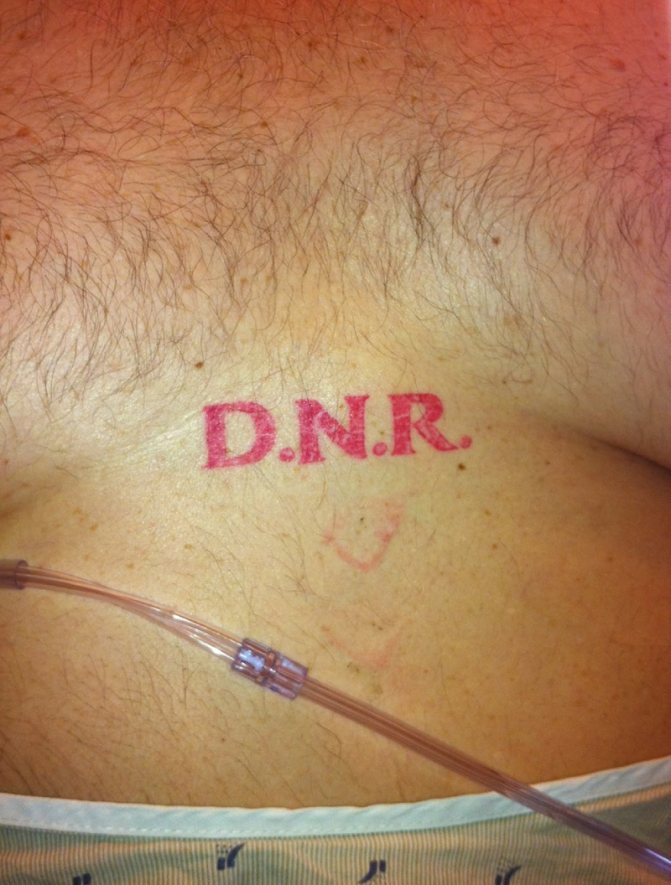

Figure 2
When asked why his tattoo contradicted his true desire for full-care, he explained that he had lost a bet playing poker while intoxicated in his younger years; the loser had to tattoo "D.N.R." on his chest. Subsequently, consent to resuscitation was documented appropriately in his medical records with further explanation of his wishes. Despite his comorbidities, he was relatively active in his daily life and, his condition remained stable during his hospital stay. We asked the patient if he would like to have the tattoo removed to avoid future confusion. He stated that he didn't think anyone would take his tattoo seriously and refused to have it removed.
Sources:
- N Engl J Med 2017; 377:2192-2193 November 30, 2021 DOI: 10.1056/NEJMc1713344 https://www.nejm.org/doi/10.1056/NEJMc1713344
- J Gen Intern Med. 2012 Oct; 27(10): 1383. Published online 2012 May 2. doi: 10.1007/s11606-012-2059-8 https://www.ncbi.nlm.nih.gov/pmc/articles/PMC3445694/
Views: 31,760
Share VK
Diseases
In addition to doctors' tattoos, there are also popular symbols that people who are not related to this profession, but who have diseases or certain health problems get. In energetic terms, it is considered wrong to put symbols on the body that indicate illness.
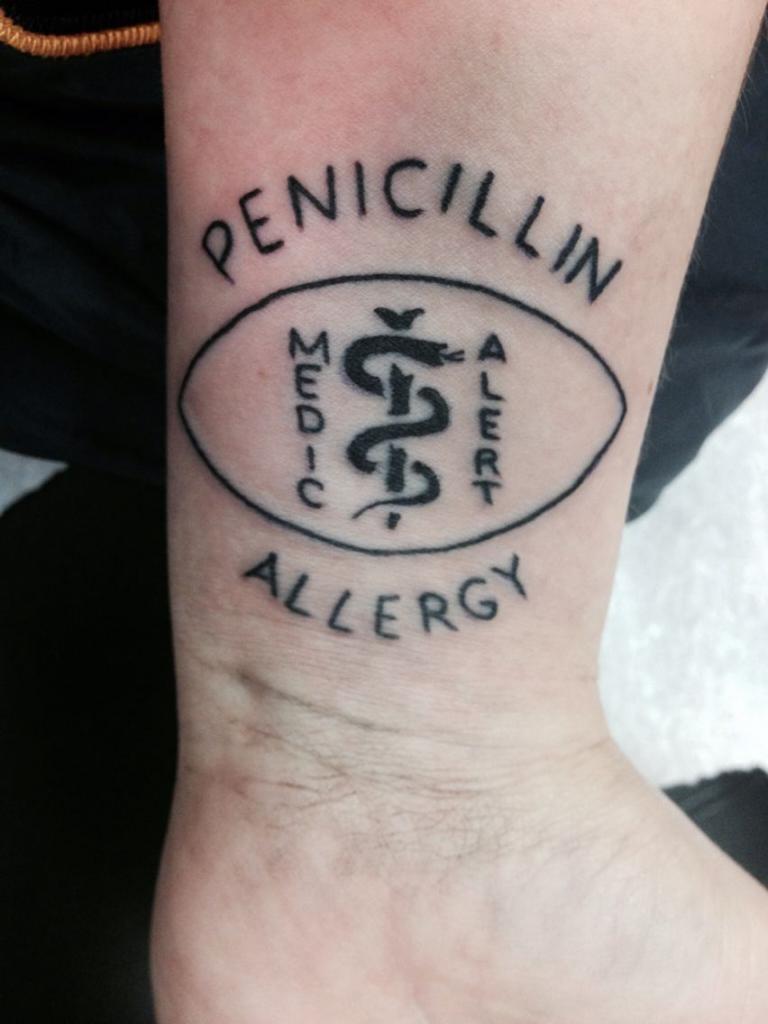

But tattoo masters say that in this way a person repels health problems, and this kind of tattoo serves as a talisman against repeated problems. Medical tattoos associated with diseases are divided into several groups:
- Symbolism for diabetics. In most cases, the inscription denoting the disease is applied in Latin or English. People make these signs so that in case of a problem, doctors will immediately understand what it is about and help solve the problem.
- ECG drawings for people with heart disease. The standard is an image with a pacemaker. However, such a tattoo put themselves and perfectly healthy people. It is called not only "cardiogram", but also "pulse line", "pulse of life". Means such a tattoo a thirst for life, strong energy, self-control, victory over a serious illness, concern about health, the desire to move on in life.
- Cancer signs. The tattoo clearly indicates the place on the body that is prone to the disease. By the way, a popular symbol for the image is a medical snake. Many cancer patients have such temporary tattoos. Note that many medical professionals consider oncology a contraindication to any kind of tattoo.
Some patients give themselves a tattoo with the disease in a prominent place, so that in the case of a problem (for example, a seizure) surrounding could understand what was going on. This includes, for example, the inscription "epilepsy".
The choice of sign to apply depends on the type of problem. In most cases, these are medium-sized colored symbols, but there can be entire plots with beautiful motifs. For example, the staff of Asclepius depicted on the original background.
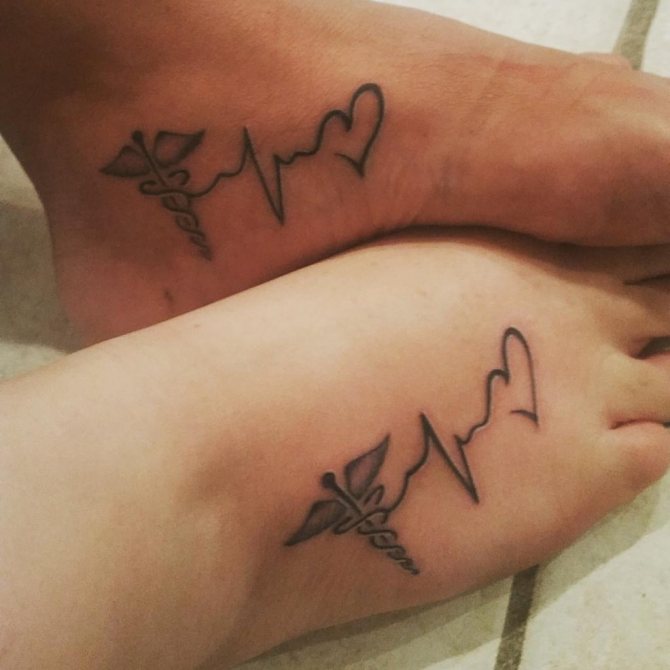

Question #8: What should I do to make my tattoo heal?
If the artist suggests that you wrap your arm in plastic wrap and not wash it until the design is fully healed, know that he is stuck somewhere in the late '90s. In today's world, the rules of care depend on the size of the tattoo.
Anastasia Danilova explains that the larger the work, the more procedures will be required. A large-scale tattoo, such as a "sleeve" or full-back design, is treated after the session by the master with a chlorhexidine solution, a cream, and covered with absorbent disposable diapers. At home, the tattoo will need to be washed with antibacterial soap and re-bandaged. The procedure will have to be repeated for five days, 3-4 times a day, and then another five days to smear the pattern with cream.
For a small tattoo, a medical film for healing burns will be enough. For example, the German "Suprasorb F". It does not need to be changed and you can safely wet it. After five days, the film is removed and the tattoo is washed with antibacterial soap. For complete healing, the design is smeared with special creams for wounds and burns - for example, "Depantenol" or "Bepanten".
Places of application
Depending on what the meaning of the tattoo, what the symbol means or what it warns of, the place of application is chosen. If it is a direct indication of the presence of the disease, the tattoo does in a prominent place, as we have already noted above.
If the symbol means belonging to a profession, it is done on the hand or forearm. Although work-related tattoos are done to the desire of each person. For this purpose, you can choose any place you like. Popular areas on the body are considered the shin, thigh, shoulders and forearms. The abdomen and back may be used less frequently.
Sometimes tattoos are done on the legs, on the upper part of the thigh. Preferably this is the choice of girls, although men can also apply themselves symbols on these areas of the body.


Question #6: What colors do you use?
Poor-quality pigments quickly "sag" under the skin and lose their brightness. In addition, they can be harmful to health. Julia Grigorieva explains that low-quality pigment may contain harmful components. For example, red dyes contain mercury or polymers - toxic plastic particles. The body cannot excrete these substances on its own, and there is a risk of poisoning. Therefore, do not hesitate to ask about the country of origin and the composition of the paints.
The name of the company is not so important - now there are a lot of good American, German and Russian manufacturers. The main thing on the bank was a clear label indicating the composition. In addition, about quality paints master will be happy to tell you. If he hesitates or refuses to answer - most likely it is "nameless China
Olga Postolova, master tattooist
Disguise of scars
To hide imperfections on the skin, tattoos are also used. There is no choice of location here, because you have to make the markings on the scar. There can be difficulties in the process, because during the scarring period the skin becomes denser and the pigment is much lighter.
As a standard, only black is used for masking, although colored variants can also occur. To hide the scar on the hand, the staff of Asclepius will look spectacular. Although the tattoo is complex in terms of performance, the result is worth it. This tattoo has many meanings: wisdom, longevity, victory over disease, fertility, rebirth, healing, immortality. That is why this image is so popular among both medics and sick people.
Women hide the scars from the cesarean section with the help of such tattoos, in addition to medical options, choosing also animalistic and plant motifs. Even if the chosen design does not fit the parameters, the master tattooist can make a sketch of a larger, complementing the standard element with beautiful details.
Blood type
Information about the blood group and Rh factor is considered one of the subspecies of tattoos. Recently, more and more people make themselves such body signs, in order to save medics time if necessary.
The symbol will look laconic and simple, but it can be supplemented with other data. It is made a drawing on the wrist, so that the tattoo would immediately catch the eye.
The popularity of such tattoos have a military and people whose work is associated with a great risk to life and increased health hazards. In this case, the tattoo is made just below the armpit, that it was visible, but at the same time the symbolism is not immediately apparent. For the application it is recommended to use black pigment.
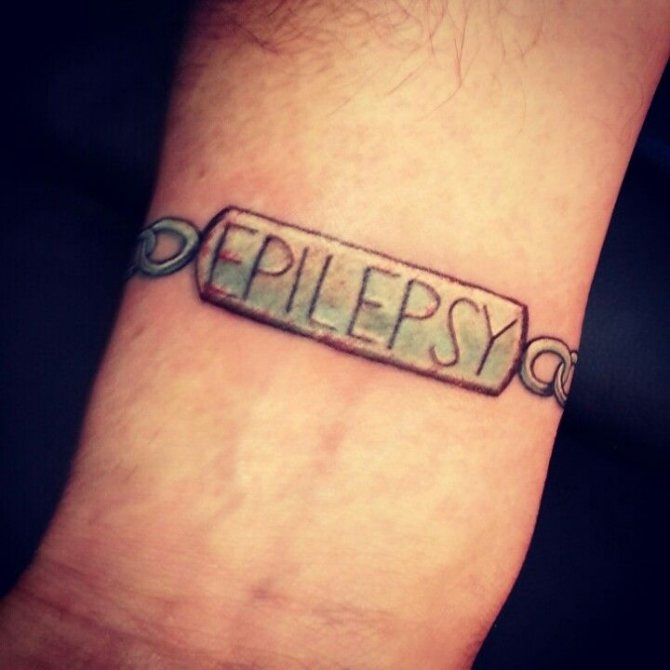

Plastic surgery
Even in this industry, medical tattoos are popular. They are an aesthetic addition to the image and allow you to hide unsuccessful surgery or the effects of healing scars. In plastic surgery, tattoos are done on the lips to highlight the contour and hide minor imperfections.
Black pigment is also used on the contours of the eyelids. This allows to visually expand the shape of the eyes without surgical intervention. Postoperative scars can be made lighter by the master, or a small shadow can be placed on them to make them not so noticeable.
Tattoos in this sphere of application can be considered a real art, because ordinary pigments in the hands of the master turn into a weapon of youth, allowing not only to eliminate minor flaws, but also to visually improve the appearance.
Tips of the masters
Before applying the symbol on the body, it is necessary to study medical tattoos and their meaning. If there is no confidence that it will be beautiful and after some time will not get bored, it is better to abandon such an idea.
It should not be done spontaneously. Drawing symbols on the body is a serious and considered step, for which it is necessary to prepare in advance. Masters advise to choose a few sketches for yourself before the beginning and study them carefully.
If there is a choice between colored tattoos and standard black ones, it is better to make a monochromatic drawing. A beautiful tattoo can not only hide flaws, but also improve the appearance.
Presence of a pacemaker
The use of special medical equipment, such as a pacemaker, impose certain restrictions on resuscitation. Therefore, as one of the ideas of a medical tattoo, you can consider an image denoting the presence of such a device.
In general, medical tattoos are not mandatory. In my opinion, these days, for the most part, they are done for aesthetic reasons rather than purely practical ones. In the article about blood group tattoos, we saw that even from such a simple idea you can make a real work of art. And now, the long-awaited photos of medical tattoos!
